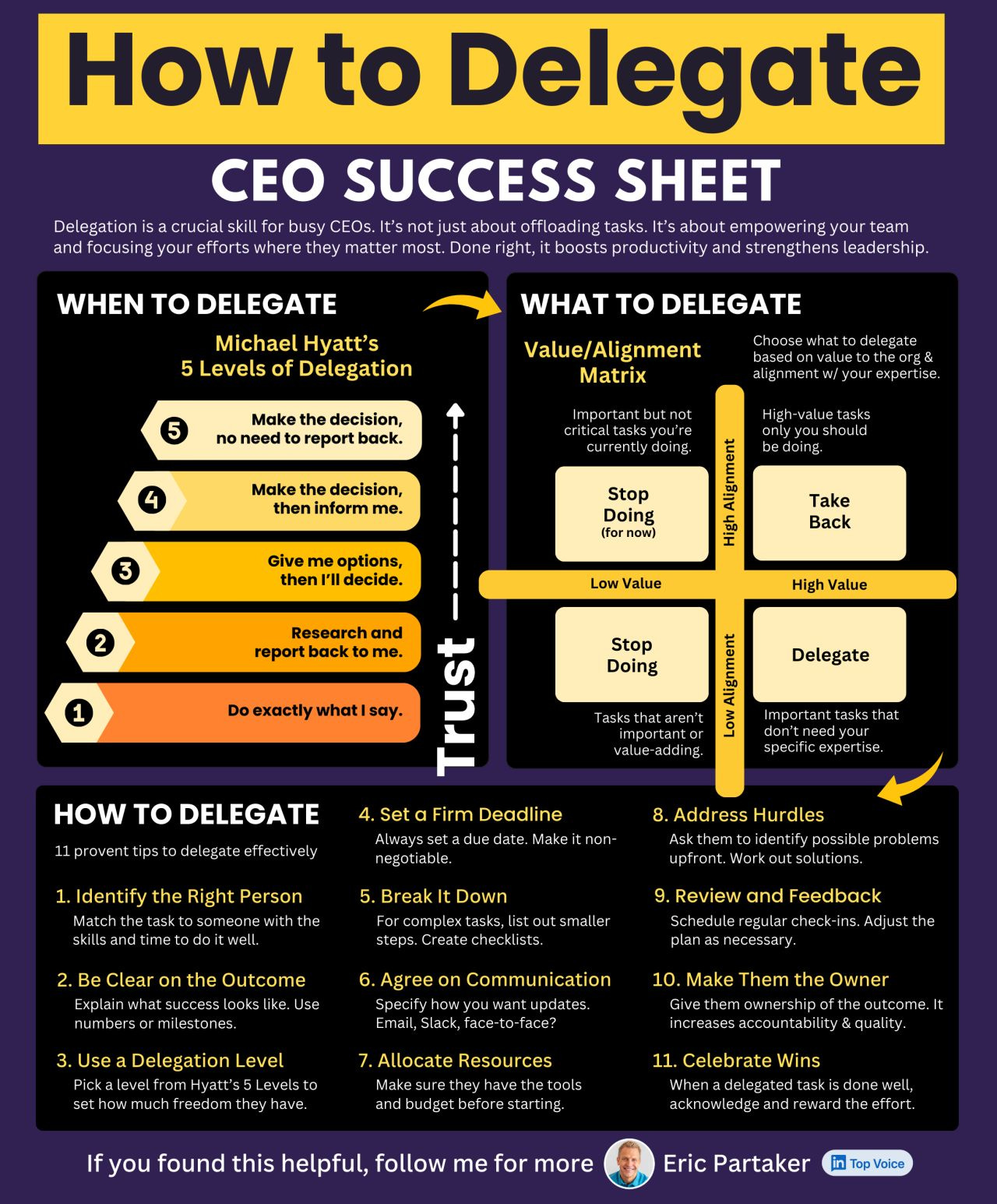IG#23: Leading with Precision: Running Razor-Sharp One-on-One Meetings
Everything I've learned in 7 years as a manager about running a 1:1 meeting.

Happy Sunday!
Hope you had a great weekend so far. Here’s your Sunday read: a comprehensive guide to 1:1 meetings, plus a few nuggets selected for you. Let’s dive in:
[1 Deep Dive]: Running a successful 1:1 meeting
Meetings have a bad reputation. In fact, their reputation is so bad, that Shopify decided to remove all meetings from company calendars this year.
I agree with this. I hate meetings.
Most of them, that is:
- I don’t believe in using weekly team meetings as a medium to broadcast information.
- I don’t believe in using impromptu meetings to work on something that could be worked on in silence.
- I don’t believe in using quarterly leadership meetings to present your quarterly goals.
But to each Yin, there’s a Yang.
Because I also love meetings.
- I believe in in-person meetings to collaborate and brainstorm.
- I believe in getting together with clients to understand their challenges.
- I believe in meetings with a clear agenda, desired outcome, and completed prep work.
And I believe in 1:1 meetings with your direct reports.
Andy Grove wrote: “[…] a meeting is merely the medium through which managerial work is performed.”
1:1 meetings are a tool. A powerful one.
It’s worth learning how to use it properly.
Today, I want to share with you everything I’ve learned about running 1:1 meetings in my 7 years as a manager.
We’ll break this post down into:
- → Why 1:1s
- → Cadence & Setting
- → Preparation
- → Running the meeting
- → Bonus: Managing up
Let’s dive in.
Why 1:1s
1:1 meetings serve 3 purposes:
- Accountability: they hold both you (the manager) and your direct report accountable to the work that both have committed to doing.
- Coaching & Problem Solving: in the meeting, your direct has the chance to bring up issues in his work that you can work through together. They also present a prime opportunity to coach your direct.
- Actions: Identify the next steps in order to achieve your directs (and thus, your) goals.
A subordinate won’t bring up concerns that are lingering deeper at the coffee machine. Nor will they necessarily dare to come to your office (or to give you a call).
When you dedicate time to them, issues arise.
And you get to do what you’re paid to do: to manage.
In my experience, 1:1s are the single most important appointments in your calendar as a manager. Treat them as such.
Cadence & Setting
The experience of your direct report informs the frequency of your 1:1s. If they’re new to the job, having 1:1s weekly is mandatory; maybe even more often (eg. twice a week) initially. With more experienced directs, it’s okay to have bi-weekly 1:1s, although I’d never go beyond that.
Since 1:1s are your main managerial tool, it’s okay to allocate a lot of time to them. Your direct will definitely not bring up deeper issues in a 25 minute meeting, of which 15 are dedicated to smalltalk, accountability, and next steps.
So set aside 45 minutes at the very least; one hour is even better.
If you have 8 directs, that’s still only 20% of your work-week. And time well spent.
My friend Edward - an incredibly savvy B2B marketer and experienced manager - said it well recently: “Managing people is [..] your main responsibility. It’s not something you do on the side after you've done all your IC work.”
Dedicate the time, and put the meetings into your calendar.
Finally, NEVER CANCEL YOUR 1:1s. Moving them is okay, but canceling isn’t. They are your only official touchpoints with your directs; if the 1:1 isn’t taking place, then you’re not doing your job as a manager.
Preparation
Your direct owns the meeting.
Not you.
This means:
- They prepare the agenda
- They get to talk about the things they want to talk about
- They keep track of the action items
As a manager, you have 6-8 1:1s every week. Your direct only has one. Therefore, it only makes sense that they own the meeting.
For each meeting, go through the following preparation steps:
- Create a meeting doc (I use Notion, but can be done in any shared document)
- Update OKRs (or whichever metric you use to track goal attainment) in the doc
- Copy & paste action items from the last 1:1 into the document to review them
- Note down any points you’d like to discuss (remember, your direct owns the meeting, so his points come first)
- Review action items from last week to ensure you haven’t missed anything
I have created a simple Notion template for my 1:1s. Reply to this newsletter, or send an email to ideation@dominiknitsch.com, and I’ll get it to you soon.
Running the meeting
It’s time to do your 1:1. A few pointers:
- Listen actively! Your direct is sharing his concerns, so this is important. Ask clarifying questions if needed.
- Take notes. Even if you never look at them, it helps keep you focused on the work at hand. More often than not, I review them later in order to ensure I got things down correctly.
- Don’t be in a rush. Take your time. You’ve allocated enough of it. This meeting is the only real face time your direct gets with you this week. Respect it.
After the meeting, identify any action items you’ve taken and transfer them to your task management system (I use the Motion App).
Then, get back to work. You’ve just removed a ton of obstacles for your direct report and increased clarity for them.
Until next week.
Bonus: Managing Up
If you’re not the founder or CEO of the company, chances are you also have to report to someone.
You can - and should - use the same structure with your manager, and treat 1:1s the same way. This has helped me a lot giving structure to my, at times, highly unstructured managers, and ensured I got what I needed.
Plus, having notes of your 1:1s can come in handy when there’s a discussion about the details you agreed upon. The notes are always right. ;)
And that’s how you run a successful 1:1 meeting.
Remember that Shopify decision in the beginning?
I didn’t give you the whole picture. In fact, Shopify only removed all recurring meetings with more than two people from company calendars.
Because they also believe in the power of 1:1 meetings.
[2 Nuggets]
Delegation Cheat Sheet
Two editions ago, I wrote about the Six Levels of Delegation.
A few days later, Eric Partaker outdid me with his delegation cheat sheet.
On top of the levels of delegation, he also includes:
- The Value/Alignment Matrix: evaluate tasks on their value to the company, and their alignment with your skillset. Only if both are high, do them yourself; else, delegate, push back, or stop doing.
- Tips on delegation: I especially struggle with setting deadlines, so hearing that one more time was worth it.
I’ve included the entire sheet below. Now, delegation shouldn’t be an issue anymore - in theory. Let me know how you get on putting all that into practice!

My recent favorite, scary read: What’s Our Problem?
Tim Urban, known through his beautiful blog Wait But Why and his viral TED Talk, spent the last six years writing a book.
This book is called “What’s Our Problem?”, and it’s about the decay of the American society - but not in the way you’d think.
It covers thinking patterns of societies, how they’re slowly but steadily deteriorating and what that means for us. He also introduces the concept of “Social Justice Fundamentalism”, which has been running rampant throughout the US and especially in academia.
This Twitter Thread gives a solid explainer on what it is, but I strongly encourage you to read the entire book.
The first half is a bit tedious, but once you get to the second, it’s captivating. It makes you angry. It’s scary.
It’s one of the best pieces of criticism of our “woke” society that I’ve read.
Get it here, or wherever else you get books.
[X Links]
- Interested in how online creators grow their audiences? Check out the Growth in Reverse newsletter, where Chenelle breaks down the different growth strategies of creators. Love reading it every Sunday. Check out, for example, this deep dive into Eric Partaker’s growth (the guy who created the delegation cheat sheet above).
- If you’re working outside a 9-5 schedule, add this to your email signature.
That’s it for this edition - thanks for tuning in!
One ask from my side
I’ve been getting a lot of feedback that some of you really enjoy what I’m writing - which makes me feel giddy, warm, and fuzzy. Please keep that coming.
My friend Lea mentioned recently: “a few friends and myself love the newsletter - we don’t always agree with what you write, but it encourages discussions among us, and that’s awesome”.
I love hearing that. If everybody agreed all the time on the things that I write, this stuff would be boring as hell.
So if you feel anything like Lea, please tell a friend about this newsletter, and maybe even forward them this email. It’s the best thing you can do to help this newsletter grow.
The more people subscribe, the more time I’m forced to spend on writing the best possible newsletter. Again, everybody wins.
Thank you.
That’s it for this edition of International Generalist. Thanks for tuning in and reading!
Who’s behind International Generalist?
I’m Dominik, and every day, I try to figure out how to become a tiny bit more effective. Then, I share some of the lessons learned here.
When I’m not writing, I build the international business for Sdui - the Leading European SchoolOS -, play Lacrosse, lift weights and enjoy draft beers.
Here’s how else I can help you:
- Read the newsletter archive for more actionable nuggets
- Download your free copy of The Ultimate Guide to Time Management (how to reclaim 4 hours of your day)
- Connect on LinkedIn or Twitter for daily doses of insights
- Send me a question that you’re thinking about! I’m always looking for content that is relevant to YOU.
See you in two weeks!
Much love
Dominik
Dominik Nitsch Newsletter
Join the newsletter to receive the latest updates in your inbox.


